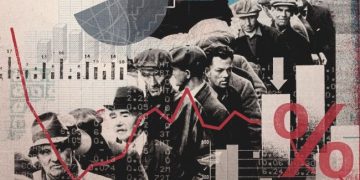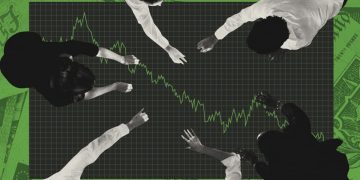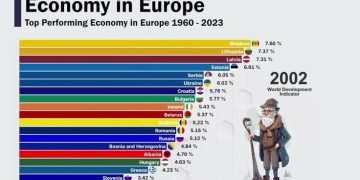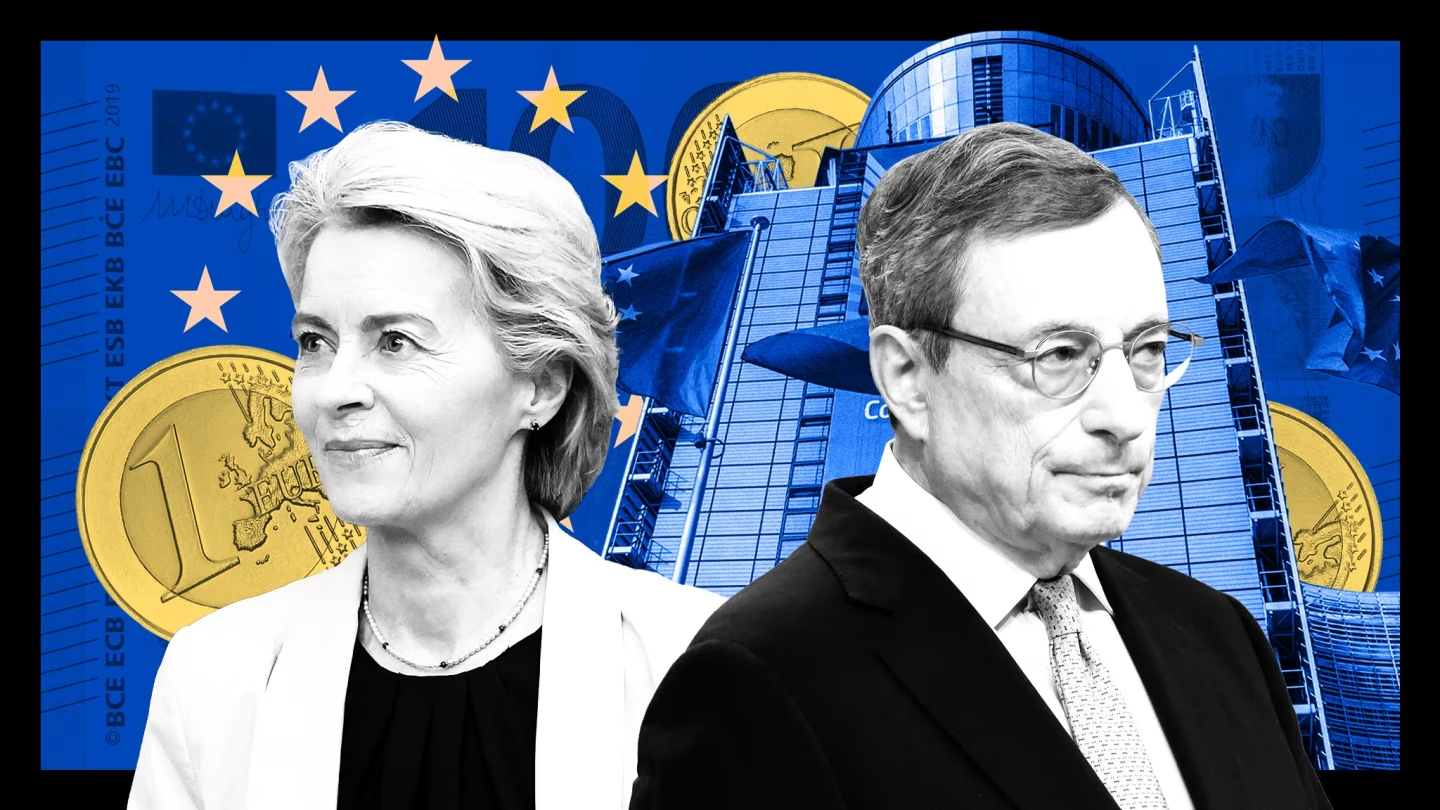Introduction
Europe, as one of the largest and most interconnected economic regions globally, plays a significant role in shaping global financial markets. In the wake of the COVID-19 pandemic and the subsequent economic challenges, Europe’s recovery has been under intense scrutiny. The question that arises is whether the region’s economic recovery can support stable and sustained growth in financial markets.
Economic recovery is a complex process, influenced by factors such as government policies, consumer behavior, global trade dynamics, and structural shifts in the economy. For Europe, which has been grappling with issues like inflation, slow growth, and geopolitical tensions, the ability to maintain stable financial market growth hinges on how well these challenges are addressed.
This article explores the pace of Europe’s economic recovery, the potential obstacles it faces, and whether these factors will allow for sustained growth in financial markets.
Section 1: The Current State of Europe’s Economic Recovery
To understand whether Europe’s economic recovery can support financial market stability, it’s essential to examine the key indicators of recovery. These include GDP growth, employment figures, inflation levels, and industrial output.
1.1 GDP Growth and Economic Output
The Eurozone economy has shown signs of recovery since the depths of the pandemic. However, the recovery has been uneven across the region. Countries like Germany and France have fared better than others in terms of GDP growth, while economies in Southern Europe, including Italy and Spain, have faced more challenges.
- Post-Pandemic Growth: In the aftermath of the COVID-19 crisis, the region witnessed an initial surge in GDP growth due to pent-up demand, government stimulus packages, and the easing of lockdown measures. However, this growth has been slowing down as supply chain disruptions, energy price hikes, and inflationary pressures have taken their toll. The European Central Bank (ECB) has played a role in stabilizing the economy through monetary policies like interest rate adjustments and quantitative easing. Yet, this support is gradually being phased out, which could impact the pace of economic recovery.
- Potential for Stagnation: Despite these recovery efforts, the economic growth in Europe has been slower compared to other regions, particularly the U.S. and parts of Asia. Sluggish GDP growth could weigh on financial markets as investor confidence remains uncertain. If the recovery fails to pick up pace, it could lead to lower corporate earnings, weaker demand, and a decline in market activity.
1.2 Employment and Labor Market Recovery
Employment is another crucial indicator of economic recovery. The unemployment rate in the Eurozone has dropped from the pandemic highs, but there are significant variations among member states. Unemployment in countries like Spain and Italy remains relatively high compared to the region’s average.
- Long-Term Unemployment: Long-term unemployment remains a concern in several European countries, particularly in southern Europe. This can have a dampening effect on consumer confidence and spending power, which in turn affects the overall economy. If labor market recovery is uneven, it can result in weaker domestic demand, limiting the broader economic recovery and, by extension, financial market stability.
- The Impact on Consumer Confidence: The recovery of the labor market is essential for boosting consumer confidence and, in turn, supporting spending. If high unemployment persists, it could weigh on the pace of the recovery, limiting economic growth and leading to heightened volatility in financial markets.
1.3 Inflationary Pressures and Cost of Living
Inflation has been a significant concern in Europe, exacerbated by the energy crisis, supply chain disruptions, and the aftermath of government stimulus spending. Inflation rates have surged across the region, pushing central banks to raise interest rates in an attempt to bring prices under control.
- Rising Costs of Living: Higher inflation directly impacts consumer purchasing power, as rising prices reduce disposable income. This has been particularly challenging for households in countries with higher unemployment rates and lower average incomes. Persistent inflation could undermine recovery efforts, especially if wages do not keep up with price increases.
- Monetary Tightening: The European Central Bank’s tightening of monetary policy—raising interest rates and gradually scaling back its quantitative easing programs—adds another layer of uncertainty. While these measures are necessary to curb inflation, they could slow down economic activity and impact financial market growth, especially in sectors reliant on low-interest-rate conditions.
Section 2: Factors that Could Hinder or Support Europe’s Economic Recovery
While some positive indicators suggest a recovery, several factors could either hinder or support this process, and thus affect the stability of financial markets. These include geopolitical tensions, the energy crisis, and changes in global trade dynamics.
2.1 Geopolitical Tensions and Global Uncertainty
Geopolitical events, such as the ongoing war in Ukraine, have had a significant impact on Europe’s economic outlook. Energy shortages and disrupted trade relationships are only a few of the challenges stemming from these tensions.
- Energy Crisis: Europe’s reliance on Russian energy exports has been drastically reduced due to the ongoing war in Ukraine. While the region has made strides to diversify its energy sources, the short-term effects of this transition have led to high energy prices. Energy-intensive industries are facing higher operational costs, which could affect production levels and contribute to inflation.
- Investment Risk: Geopolitical instability and uncertainty often discourage investment. As businesses reassess their exposure to geopolitical risk, we could see a slowdown in foreign direct investment (FDI) and global capital flows into Europe. This could destabilize financial markets, as investors seek safer havens or more lucrative opportunities elsewhere.
2.2 Global Trade and Supply Chain Disruptions
Global trade disruptions, exacerbated by the COVID-19 pandemic and ongoing geopolitical tensions, have severely impacted European economies. The Eurozone, with its high dependence on exports, has been particularly vulnerable to these disruptions.
- Supply Chain Bottlenecks: While supply chains are gradually recovering, bottlenecks persist, particularly in critical sectors like automotive manufacturing and semiconductors. These disruptions can affect production levels, limit growth potential, and influence stock market performance, especially in export-driven economies.
- Shifting Global Trade Dynamics: As global trade patterns shift, Europe must adapt to new trade agreements and face competition from emerging markets. If the Eurozone fails to strengthen its trade relationships or innovate in key industries, it could face stagnation that negatively impacts financial market stability.
2.3 Policy Adjustments and Fiscal Stimulus
In response to economic challenges, European governments and the ECB have taken steps to support economic recovery, such as fiscal stimulus packages, labor market reforms, and large-scale infrastructure investments.
- Stimulus and Infrastructure Investment: Large-scale fiscal stimulus programs have supported economic recovery, but they also contribute to rising public debt levels. If governments continue to rely on these measures, it could create long-term fiscal challenges, especially if growth does not accelerate. On the other hand, successful infrastructure investments could drive growth, job creation, and increased investor confidence in financial markets.
- EU Integration and Policy Coordination: Continued EU integration and policy coordination, such as the NextGenerationEU recovery fund, could also provide stability and support economic growth. By encouraging collaboration between member states, these initiatives can foster innovation, improve economic resilience, and attract investment, thus providing stability to European financial markets.

Section 3: Long-Term Financial Market Stability
Given the current state of Europe’s economic recovery, several factors will determine whether the region can sustain stable financial market growth.
3.1 The Role of the European Central Bank (ECB)
The ECB’s role in steering monetary policy and providing liquidity is crucial to the financial stability of Europe. However, its ability to maintain stable growth while managing inflation and the risk of economic stagnation will be tested in the coming years.
- Monetary Policy Adjustments: The ECB must strike a delicate balance between addressing inflation and supporting economic growth. Prolonged low interest rates could fuel excessive risk-taking in financial markets, while high rates could stifle investment and economic activity. How the ECB navigates these challenges will significantly impact investor confidence and financial market stability.
- Market Volatility: The gradual tightening of monetary policy could increase market volatility, particularly in sectors sensitive to interest rates. Financial markets may experience short-term fluctuations as investors adjust to the changing environment. If the ECB can manage these transitions smoothly, the markets may stabilize in the long run.
3.2 Structural Economic Shifts
The recovery process may also be influenced by longer-term structural shifts in Europe’s economy, such as digital transformation, green energy initiatives, and labor market reforms.
- Green Transition: Europe’s push towards sustainability and the green transition presents both challenges and opportunities. While the shift to renewable energy and sustainable industries may take time, it could eventually drive growth and innovation, leading to a more resilient financial market. The success of these transitions will be key to long-term financial stability.
- Technological Advancements: Europe’s ability to embrace technological advancements and innovation will also play a role in driving economic recovery. The digital transformation of industries such as manufacturing, healthcare, and finance could contribute to increased productivity and growth, which would support financial market stability.
Section 4: Conclusion
Europe’s economic recovery is complex and multifaceted, influenced by factors such as inflation, unemployment, geopolitical tensions, and global trade dynamics. While some positive signs indicate that Europe’s economy is on the mend, the pace of recovery remains uncertain, and several challenges must be addressed to ensure stable and sustained growth.
For financial markets, the key to stability lies in navigating these challenges effectively. Policy adjustments, global trade relationships, and structural shifts will play an important role in supporting or hindering recovery. The ECB’s monetary policies, alongside coordinated fiscal initiatives from European governments, will continue to shape the trajectory of financial market performance.
Ultimately, if Europe can balance short-term pressures with long-term structural reforms, its financial markets could experience a period of stable growth. However, without the right policies and strategic investments, Europe’s financial markets may face continued volatility in the years to come.
































